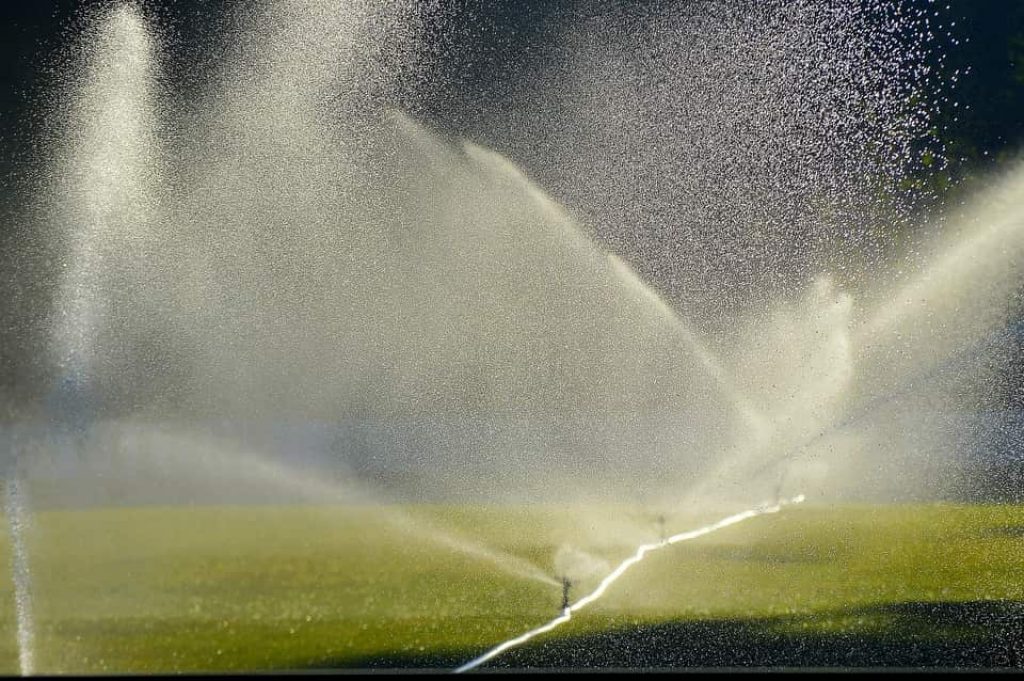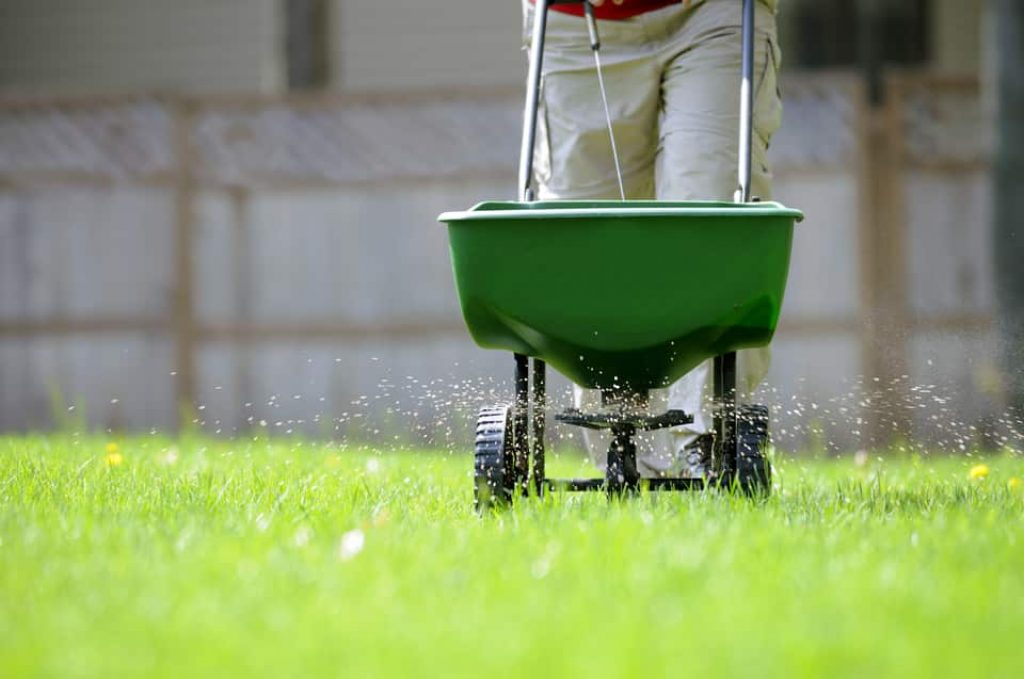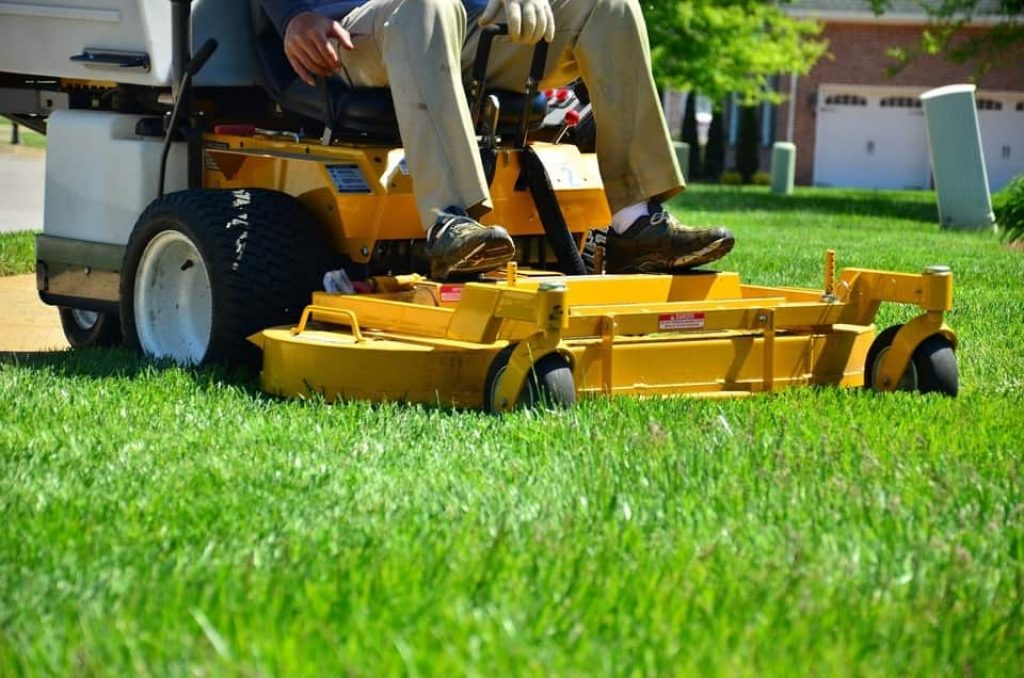Having a healthy lawn overflowing with chlorophyll is quite challenging for any gardener, but knowing the basic grass care tips is possible. In recent times, the replacement of natural grass with artificial grass has become quite common because many see that the care can be tedious to maintain healthy grass, but on the contrary, grass-like any plant has pillars on which its development rests. Knowing exactly what your grass needs and some basic care tips can help establish and maintain a healthy green lawn.
Grass in general is very dependent on mainly 2 factors, soil, and water. The soil is the main element for the grass to establish itself since everything that happens underneath will influence directly the outcome on the surface. The second most important factor is the water, which depending on the variety of the grass can be more or less tolerant to droughts, in this way choosing the correct variety is essential.
Below we detail the care tips that you must take into account to have healthy and green grass.
Variety
Choosing the correct variety is the first factor we must look at when deciding to install grass in our garden. We must evaluate which area we are in since not all lawns develop in the same way, we must evaluate the temperature regime and the hour of sunshine.
In detail, some of the most common varieties to sow according to the average temperature.
Cool-Season Grasses
Perennial Ryegrass: Mowing height is 2-3 in, with a high tolerance for traffic. For full potential needs full sun, not pH sensitivity.
Kentucky Bluegrass: Needs soil between pH 6.5-7, will grow healthy in full sun, needs a 2-3 in mowing, doesn’t tolerate high traffic.
Tall Fescue Grass: Needs a 2-3 in mowing, tolerates very well the high frequency of traffic, and could grow in full/partial sun.
Warm-Season Grasses
Bahia Grass: Can tolerate moderate traffic frequency, needs full sun to develop. 2 – 2-1/2 in mowing is recommended.
Bermuda Grass: Very popular, could tolerate high traffic, needs light-textured soil and full sun. Mowing at 1-1/2-2 is recommended.
Zoysia Grass: Sensible to pH, needs 5.8-6.5 slightly acidic soil to develop. Full/partial sun exposure is good for this grass. Mowing at 1-1/2-2in recommended.
Soil
The soil as we said before is one of the critical factors when establishing the lawn successfully. Everything that happens below is quickly reflected on the surface. Knowing what our soil lacks before sowing is essential. A pH adjustment or the addition of organic matter can be the difference between having mediocre grass and excellent grass. You can find pH testing kits at your local extension office, or you can take samples and to a local lab to have a soil profile.
Generally, grass needs soil with abundant organic matter, with an optimum pH between 6.2 -7 (slightly acidic), this can vary depending on the variety we choose. The pH in the lawn is important as it determines the availability of nutrients, when the pH values deviate too much to either side, the availability of nutrients is restricted. Warm-season grasses tolerate a slightly lower pH, while cool-season grasses prefer a slightly higher pH.
The pH value can fluctuate in a region with a lot of rain and very sandy soils, the calcium will be washed down to the lower parts of the soil.
When the soil becomes too acidic, lawns suffer and plants that thrive in acidic soils take their place.
For example, the presence of moss in your lawn indicates that your soil pH is too low for strong, healthy grass growth. Other warning signs include increases in invasive weeds, diseases, and pests.
When the soil is too acidic, you will also notice that lawns do not respond very well to fertilizers with healthy dense growth which is normally expected.
Limedust is a soil amendment made from ground limestone rock. When lime is added to the soil, these compounds work to increase the pH of the soil, which makes the soil less acidic and more alkaline. Although lime includes calcium and magnesium, which are essential nutrients for healthy plant growth, it is not a substitute for fertilizers.
Fall and spring are generally the best times to apply lime to lawns as rain, snow, and freeze-thaw cycles help the lime break down and begin to work.
The amount and duration of the treatment will be decided by the test results. But to get an idea: 1 hectare of grass at a pH of 5, for example, needs a one-point increase in pH to bring it to a pH of 6. It will take 1.2 tons of limestone to achieve this change. In other words, for 10,000m 2 we need 1200 kg of ground limestone or pellets.
Water
Water after soil is the second most important factor since the movement of nutrients from the soil to the lawn will depend on it. Depending on the variety you choose, the frequency of irrigation will vary, since some varieties are more or less tolerant of water stress. In this way, daily watering in areas of high heat and high evapotranspiration is recommended. In cold areas and where the temperature does not generate excess evapotranspiration, we can space the irrigation every 2 days. Nevertheless, if we see that the soil is excessively dry, we must water it.
In the initial stages of the lawn, it is advisable to water continuously for 3-4 days then wait 2 days to water again. This will encourage the plant to grow deep in the roots, if we water every day in the initial stages we will be promoting superficial roots since the plant will not need to look for water in the lower strata.

Weed Control
Weeding is an important practice and one that must be done very regularly and consistently. If we are going to install grass from seed, weed control can be done very easily since we can apply herbicides before planting disinfect, and eliminate any possible outbreak of weeds. We can do this by applying contact and systemic herbicides.
If we already have the grass installed and depending on the size of our garden, the control can be mechanical by manually pulling the weeds or we could choose a chemical control. Chemical control is effective for large areas and can be done by using selective herbicides, which will only kill the dicots and will not kill the grass.
Aerating and Scarified
Scarifying and aerating are two processes that go hand in hand but are very different from each other.
Scarified: It consists of “scratching” the ground in a superficial way. By doing this, we will be able to break and eliminate the thick layer of dry leaves, stems, and organic matter that forms over time, to a certain extent, it is beneficial for the lawn since it prevents excessive evapotranspiration, but when this layer becomes too wide it becomes impermeable, preventing water and nutrients get to the roots, doing more harm than good.
This layer can be removed with a manual rake-type scarifier. If the garden is large we should consider a mechanical scarifier.
Aerating: It consists of “puncturing” the entire terrain by making many holes approximately 10 cm deep. In this way we oxygenate the soil in-depth, ensuring that the water and nutrients reach the lower layers, also over time we see that the holes left by the aerator are occupied by new roots, providing the grass with greater support.
Aerators come in many forms, the most practical for small gardens are aerator shoes, which are pieces that are placed on your shoes, with spikes at the base, and make holes as you walk on the lawn. The separation between holes should be about 10 centimeters.
For larger gardens, there are aerating rollers or rollers, which are machines with wheels about 50 centimeters wide with spikes in different rows. It is a much faster and more efficient system without being too expensive.
Both tasks must be done at two times of the year, one in the spring and the other in the fall. The frequency to carry them out will depend, on the size of the layer that has formed, you will notice that is too much when water can penetrate the soil and starts forming puddles (do not leave it for more than two years). On the other hand, airing can be done every year.
Scarified
Spring: requires scarification
Autumn: another scarification, especially necessary if a lot of leaves and dry material is formed.
Aeration
Spring: Highly recommended.
Autumn: Not that important. Recommendable.
Fertilization
In this section we will talk about fertilization, and what nutrients our grass needs to look healthy and green.
In most cases, an established lawn needs 3 applications per year. The first application with a regular NPK 15-15-15 at a rate of 1kg every 40 m2, it is advisable to make the first application in mid-spring or mid-summer. The remaining 2 applications can be made throughout the year with 90 days of difference between each one, it must be urea at a rate of 1kg every 50 m2.
In both cases, the application is done by throwing evenly through
the field, it must be accompanied by good watering as it will help to solubilize the fertilizer, if we do not water we can burn the lawn.

Mowing
Mowing is an essential task to maintain healthy, beautiful, and clean grass, but for this very reason many gardeners believe that it should always be cut regardless of the state of the grass, but it can be a serious mistake if our grass is not ready to be cut as it can stress the plant excessively and if it has not developed deep roots it can cause some losses.
Depending on the variety that we are planting, the mowing height may vary, but in general, the cutting height should be between 5-6 cm high, if we cut below these values we run the risk of extracting too much foliage that the plant needs to photosynthesize. The cutting frequency differs depending on the variety and the time of year, but in general in summer if we have good irrigation frequency the mowing should be made every 7/10 days, in winter this can be done every 15-20 days.
Some rules that we must take into account when cutting. Before starting the task, we must verify the health of our grass, if we see many yellow or weak areas, perhaps it is better to try to recover those points before mowing. We must also be careful not to mow when the grass is wet, both for the safety of the operator and for the health of the plant since when mowing with wet grass the cuts are not clean leaving uneven cuts.

Wrap Up – Grass care
Wrapping up, to have long-lasting and healthy grass is important to choose a variety that suits your area, correct your soil if necessary, constant watering, and aeration, and finish a correct cut at the height that your grass needs are all that it takes.

